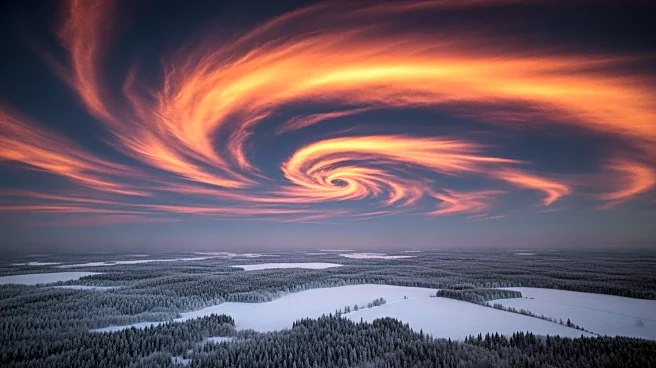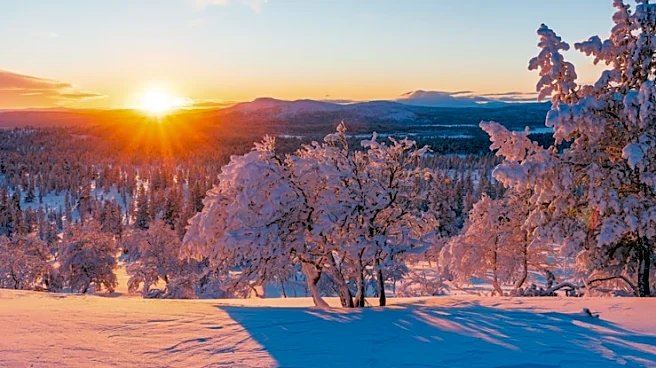What's Happening?
Meteorologists are observing a sudden stratospheric warming event, which could significantly impact winter weather patterns across the Northern Hemisphere. This phenomenon involves a rapid increase in stratospheric temperatures,
disrupting the polar vortex—a system of cold air and low pressure around the Arctic. Such disruptions can lead to the polar vortex stretching, weakening, or splitting, potentially allowing cold air to move into midlatitude regions. While these events are not uncommon, their timing and intensity can lead to extreme weather conditions, including deep cold and snow. Forecast models indicate a sharp rise in stratospheric temperatures, which could result in historic weather patterns.
Why It's Important?
The disruption of the polar vortex could have widespread implications for weather conditions in North America, Europe, and Asia. In the U.S., this could mean a shift from mild to severe winter conditions, affecting agriculture, energy consumption, and transportation. Understanding these patterns is crucial for preparing for potential cold snaps and ensuring infrastructure resilience. The event's impact on global weather patterns could also influence economic activities, such as heating demand and supply chain logistics, highlighting the importance of accurate forecasting and preparedness.
What's Next?
Meteorologists will continue to monitor the stratospheric warming event and its effects on the polar vortex. Forecast models will be analyzed to predict potential weather changes, with particular attention to the overlap of other atmospheric oscillations like El Niño. The U.S. may experience above-average temperatures initially, but colder conditions could follow after Thanksgiving. Stakeholders, including government agencies and businesses, will need to prepare for possible shifts in weather patterns and their associated impacts.














